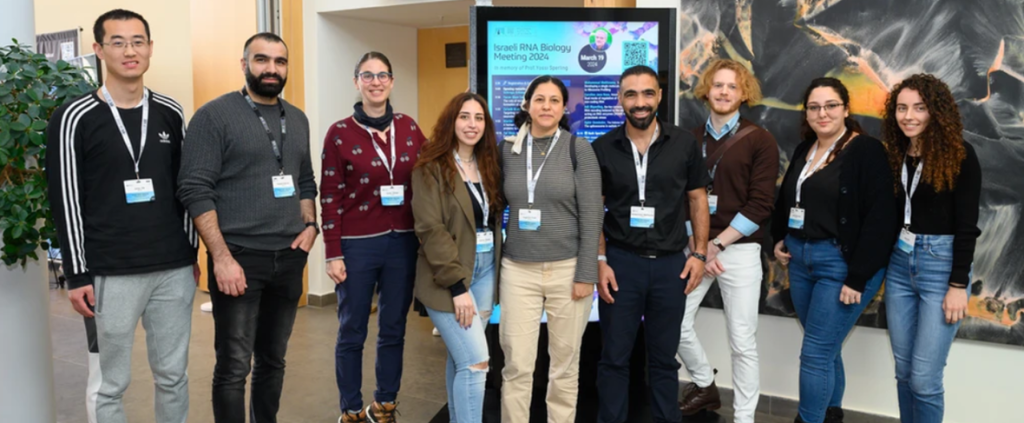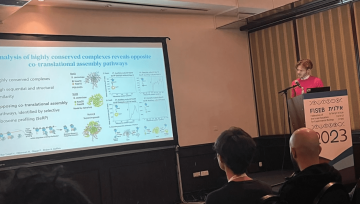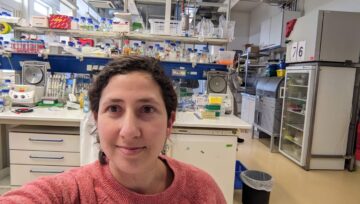This is a double achievement, as Johannes was also the winner of Paper of the Month last April. In light of this impressive streak of wins, we asked Johannes to share some interesting insights about the lab’s research, the current article, and more.
Hi, Johannes. For those who don’t know you yet, please introduce yourself in one sentence.
Originally, I studied Math and Physics for my B.Sc., but always I had a strong passion towards unravelling the mechanisms in nature from which life arise. Science and research fascinated since a very early age.
• What is the general focus of Dr. Shiber’s lab?
Our main focus is on protein synthesis, ribosome function, and protein folding. In particular, we focus on the assembly of proteins into complexes. We study the process from various angles, from the RNA level, through protein folding and assembly, and protein stability and degradation.
• Tell us about the current article. Since our last interview, what new and interesting developments have occurred in your research?
Protein assembly into functional complexes is critical to life’s processes. While complex assembly is classically described as occurring between fully synthesized proteins, recent work showed that co-translational assembly is prevalent in human cells. However, the biological basis for the existence of this process and the identity of protein pairs that assemble co-translationally remain unknown. We show that co-translational assembly is governed by structural characteristics of complexes and involves mutually stabilized subunits. Accordingly, co-translationally assembling subunits are unstable in isolation and exhibit synchronized proteostasis with their partner. By leveraging structural signatures and AlphaFold2-based predictions, we accurately predicted co-translational assembly, including pairs identities, at proteome scale and across species. We validated our predictions by ribosome profiling, stoichiometry perturbations, and smFISH experiments that revealed co-localized mRNAs. This work establishes a fundamental connection between protein structure and the translation process, highlighting the overarching impact of three-dimensional structure on gene expression, mRNA localization, and proteostasis.
• Please explain the importance of the discovery and how you see your research influencing the field in the coming years?
In summary, we unveiled a fundamental connection between the structural constraints of protein complex assembly and the translation process, emphasizing its overarching impact on regulation synchrony at all stages of the central dogma. The resulting description of protein co-translational assembly provides a framework for future studies in protein interaction, regulation, and evolutionary biology, promoting a holistic understanding of proteome organization and functionality.
• Name three key skills or tools you gained during your work and studies in the lab.
– Refining critical thinking and the ability to analyze data that I collect in my research and when encountering research in general.
– Planning and conducting experiments – in the short term, at the level of implementing new and unfamiliar protocols, and in the long term in the construction of a work plan based on a research question.
– Academic writing. Construct an article, write and draft it according to academic standards.
• How do you manage to balance research with your personal life, and what hobbies or activities help you maintain that balance?
Even in my free time I tend to engage in science, just not necessarily directly related to my research; Whether it’s reading and learning about systems in the body from a more medical perspective or expanding my knowledge in chemistry. Beyond that, I enjoy drawing, sewing, playing the piano, and recently also incorporating sports into my routine.
• What are your career aspirations going forward?
I’m debating between continuing in research but in the industry of drug development or as part of a start-up in the field or looking for a post-doc position abroad.
➡ A link to the full article:https://doi.org/10.1101/2024.01.20.576408
➡ A link to the prof. Shiber lab site: https://shiberlab.wixsite.com/shiber
➡ To Prof. Shiber page: https://biology.technion.ac.il/en/member/shiber/










